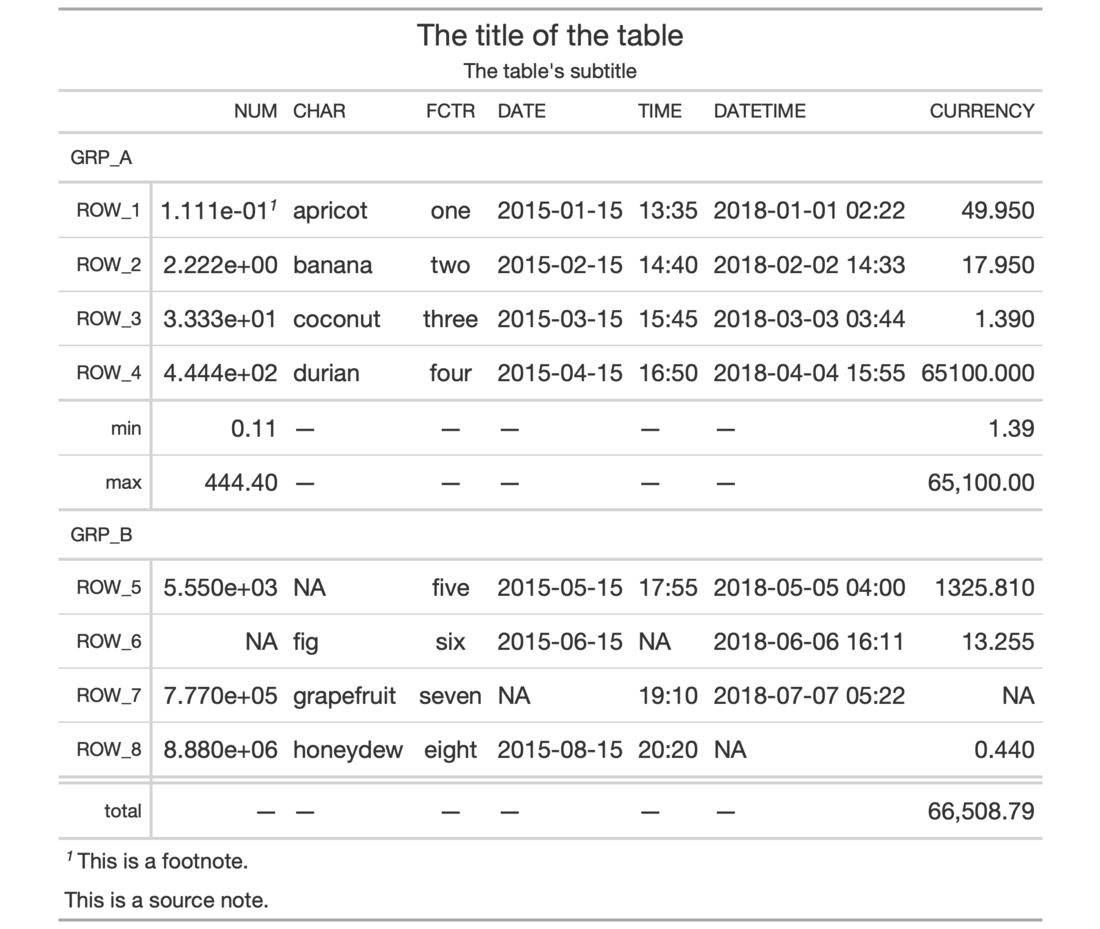Sometimes an all-capitalized look is suitable for a table. With the
opt_all_caps() function, we can transform characters in the column labels,
the stub, and in all row groups in this way (and there's control over which
of these locations are transformed).
opt_all_caps( data, all_caps = TRUE, locations = c("column_labels", "stub", "row_group") )
Arguments
| data | A table object that is created using the |
|---|---|
| all_caps | A logical value to indicate whether the text transformation
to all caps should be performed ( |
| locations | Which locations should undergo this text transformation? By
default it includes all of the |
Value
An object of class gt_tbl.
Details
This function serves as a convenient shortcut for <gt_tbl> %>% tab_options(<location>.text_transform = "uppercase", <location>.font.size = pct(80), <location>.font.weight = "bolder") (for all locations selected).
Figures

Function ID
9-4
See also
Other Table Option Functions:
opt_align_table_header(),
opt_css(),
opt_footnote_marks(),
opt_row_striping(),
opt_table_font(),
opt_table_lines(),
opt_table_outline()
Examples
# Use `exibble` to create a gt table with # a number of table parts added; all text # in the column labels, the stub, and in # all row groups is to be transformed to # all caps using `opt_all_caps()` tab_1 <- exibble %>% gt(rowname_col = "row", groupname_col = "group") %>% summary_rows( groups = "grp_a", columns = vars(num, currency), fns = list( min = ~min(., na.rm = TRUE), max = ~max(., na.rm = TRUE) )) %>% grand_summary_rows( columns = vars(currency), fns = list( total = ~sum(., na.rm = TRUE) )) %>% tab_source_note(source_note = "This is a source note.") %>% tab_footnote( footnote = "This is a footnote.", locations = cells_body(columns = 1, rows = 1) ) %>% tab_header( title = "The title of the table", subtitle = "The table's subtitle" ) %>% opt_all_caps()